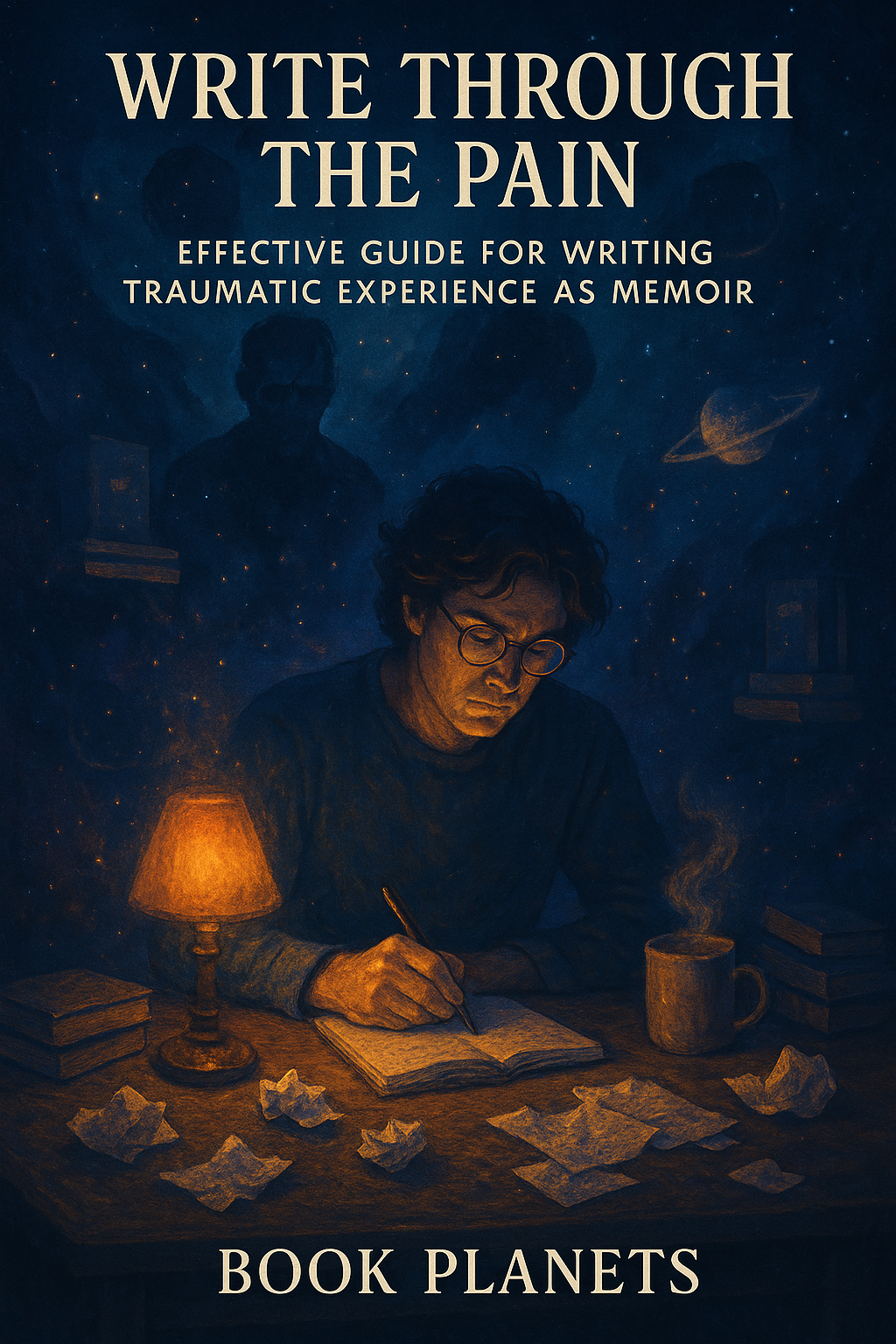Writing about trauma is one of the most vulnerable yet powerful things a person can do. It’s more than simply telling a story—it’s about reclaiming your voice, making sense of the chaos, and, sometimes, finding healing in the act of expression. Whether you’re navigating this journey on your own or seeking help from professional ghostwriters, the process of writing through pain demands care, patience, and honesty.
In this guide, we’ll explore how to write a memoir rooted in traumatic experiences, the emotional challenges that come with it, and how to shape your pain into a narrative that informs, empowers, and resonates.
Why Write About Trauma?
There’s no denying that trauma changes us. But writing about it can help us reconnect with ourselves and others. A trauma memoir can:
- Offer clarity and closure
- Create a sense of empowerment and control
- Inspire and comfort readers who’ve experienced something similar
- Break the silence around issues that are often stigmatized or misunderstood
For many, memoir writing becomes a form of activism—especially when the story highlights broader systemic issues like abuse, racism, or mental illness.
Start with the “Why”
Before you write a single word, ask yourself: Why do I want to share this story?
Knowing your “why” gives your writing purpose. Is it to heal? To help others? To honor someone’s memory? Your answer will guide everything—from the voice you use to the events you choose to include.
This is where memoir ghostwriting services can be particularly helpful. A skilled ghostwriter doesn’t just write—they listen deeply and help you uncover the themes that make your story compelling.
Honor Your Own Boundaries
One of the hardest parts of writing through trauma is knowing how much to share. It’s okay not to include every detail. You are not obligated to write about anything that re-traumatizes you.
Setting emotional boundaries can look like:
- Skipping triggering events that don’t serve the narrative
- Changing names or minor details for safety
- Taking breaks when the writing gets too heavy
Remember, writing a memoir is a marathon, not a sprint. Go at a pace that protects your well-being.
Emotional Pacing: Let the Story Breathe
One key to writing trauma well is pacing. Dumping all the hard parts onto the page at once can overwhelm your reader—and yourself. Instead, weave painful moments into the broader arc of your story, surrounded by context, reflection, and even moments of joy or humor.
This technique of emotional pacing allows your readers to breathe, process, and stay with you through the most difficult parts.
Tell the Truth, But Don’t Be Afraid to Reflect
Memoir isn’t journalism. You’re not obligated to deliver a fact-by-fact timeline. What matters most is emotional truth.
Use reflection to deepen your writing. Instead of just telling readers what happened, explore how you felt, what it meant, and how it shaped you. This is where a ghostwriter for memoirs can support you—by helping you find clarity and coherence in moments of emotional intensity.
Choose a Structure That Works for You
Trauma often creates fragmented memories. So, it’s okay if your memoir doesn’t follow a strict chronological order.
Consider alternative structures like:
- Thematic chapters
- Non-linear timelines
- Vignettes or snapshots of key moments
A flexible structure mirrors the way trauma is experienced—often in flashbacks, loops, or fragmented thoughts. Lean into that.
Use Sensory Detail to Ground the Reader
Even the most painful stories can become powerful when told with vivid detail. Use all five senses—what did you see, hear, smell, taste, or feel? These details anchor the reader and create a visceral experience that goes beyond words.
Be careful, though: avoid overloading your narrative with graphic content. It’s not about shock value—it’s about truth, and truth doesn’t need embellishment.
Seek Feedback You Trust
Writing about trauma is deeply personal. Sharing it with the wrong person can be discouraging—or even damaging.
Choose feedback partners who understand your intent and respect your boundaries. If you’re working with professional ghostwriters, make sure they specialize in memoirs and have a trauma-informed approach. They should know how to handle delicate content and guide you through edits with empathy and care.
Be Prepared for Emotional Fallout
It’s normal to experience emotional “aftershocks” while writing about trauma. Old wounds may reopen, nightmares may return, or anxiety may spike.
Here’s what can help:
- Have a support system in place (therapist, friend, or mentor)
- Practice self-care after writing sessions
- Give yourself permission to step away when needed
Memoir writing isn’t therapy, but it can be therapeutic—if approached with mindfulness.
Balance Vulnerability With Strength
Your memoir isn’t just a list of bad things that happened. It’s also about what you did next. About survival. About resilience. Let your strength shine through—not by pretending everything’s fine, but by showing how you found your way through the pain.
Don’t be afraid to show complexity. Trauma survivors are not just victims. They’re also artists, parents, leaders, friends, dreamers. Let the fullness of who you are take up space on the page.
Respect the Privacy of Others
Your story might include people who hurt you—or helped you. Naming them can have legal and ethical implications.
Use pseudonyms or composite characters if needed. Focus more on the impact of their actions than on assigning blame. This protects you from liability and keeps the narrative focused on your healing and growth.
Ending With Meaning
Many trauma memoirs don’t have a neat resolution—and that’s okay. Real life is messy. But readers still need a sense of closure.
End with insight, hope, or even an open question that invites reflection. Show how you’ve changed. Show what you now understand, even if the wound still aches.
Consider Working With a Memoir Ghostwriter
Writing about trauma can be too overwhelming to do alone. This is where memoir ghostwriting becomes not just a convenience but a lifeline. A skilled ghostwriter listens without judgment, captures your voice, and shapes your story with literary finesse—while giving you space to focus on healing.
Many people wrongly assume hiring a ghostwriter means they’re not “really” the author. But in truth, your voice, your experiences, and your insights drive the story. The ghostwriter is just the compass.
Final Thoughts: Your Story Matters
Writing through the pain takes bravery. But what lies on the other side of that courage is something beautiful—a story that matters. Whether you publish it or keep it private, whether you write it alone or with help, remember this: your story has value.
Your pain is real. Your growth is real. And when you put that on the page, you don’t just tell a story—you light the way for others.

